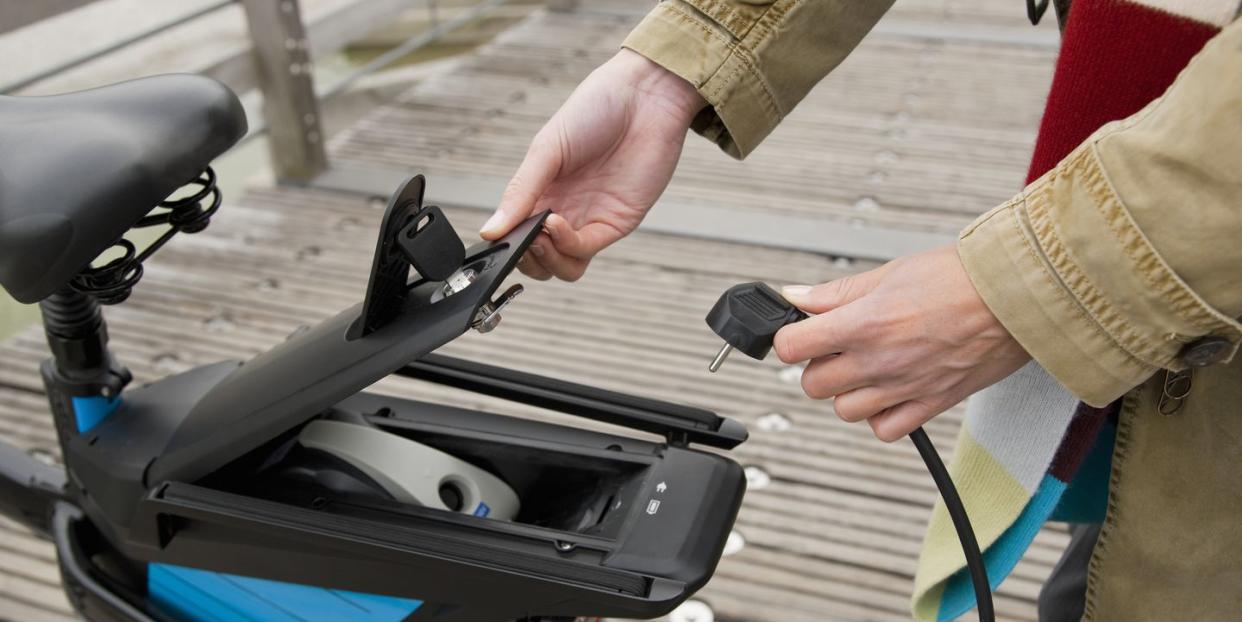The Ride into Our Electric Future Will Be Led by Bikes

Accounting firm Deloitte says 300 million electric bikes will be out on the world's roads by 2023, which is 50 percent more than today.
One reason: lithium-ion battery costs have dropped 87 percent between 2010 and 2019, and they're also much lighter than old e-bikes' lead-acid batteries.
In the U.S., e-bikes are not the juggernaut they are in some parts of the world, but bike sharing and people moving to urban areas will propel increased U.S. sales of e-bikes, too, according to Deloitte's predictions.
With an extensive number of new electric vehicles coming as soon as next year, it's no longer up for debate whether or not the future for the automotive industry is electric. Ford, Mercedes-Benz, Mazda, and so many others—in addition to numerous startups—are bringing new EVs to market between now and 2022. But electric transportation is not limited only to four wheels: e-bikes are experiencing incredible growth in sales. That's true not just in places like the Netherlands, where people have traditionally used bikes as a main form of transportation, but also in the U.S., where 400,000 e-bikes were sold in 2018—compare that to 185,000 sold here in 2013, according to Deloitte figures.
The accounting firm Deloitte's annual technology, media, and telecommunications report predicts that, globally, 40 million e-bikes will be sold and about 300 million will be out on the world's roads by 2023, including both personal bikes and those used for ride-sharing.
That's a lot of e-bikes, and they are succeeding without any kind of futuristic design; e-bikes are traditional-looking bicycles with pedals, but the rider can choose to be aided by an electric motor using lithium-ion battery technology, as in EVs. These are lighter than the lead-acid batteries that most electric bikes used until a few years ago, and lithium-ion batteries are also getting cheaper, making e-bikes more affordable, too—priced somewhere from the cheapest ones at around $400 to the high four figures for high-end bikes. Add to that the fact that an e-bike uses very little electric power compared to a four-wheeled EV, and the popularity of this mode of transportation becomes clearer.
Those numbers predictions from Bloomberg New Energy Finance (BNEF) and the International Energy Agency (IEA) predict that in 2025, there will be 10 million and 12 million electric vehicles sold worldwide, respectively. The IEA has also said that it pictures 125 million electric vehicles on the road by 2030.
Granted, e-bikes are a fraction of the cost of a new electric vehicle, with the former costing around $1,500, and the latter often costing north of $45,000. But Deloitte’s prediction is a testament to the changing lithium-ion battery technology, including the increases in efficiency and the lowering of prices to where the everyday consumer—not just early adopters—would consider buying one. Between 2010 and 2019, battery prices dropped by 87 percent, according to BNEF, which also predicts that prices will fall another 50 percent by 2023.

Those price deductions are inevitably have an impact on the price of electric vehicles and the potential demand for them. The demand for e-bikes could make its way to electric vehicles as more people become accustomed to the technology and what it offers.
Another big reason for the prediction of increased e-bike sales is that more and more people are moving to urban areas where they're more useful in getting around, Jeff Loucks, executive director of Deloitte's Technology, Media, and Telecommunications center, told The Verge.
We're all well aware by now that automakers are betting big on an electric-vehicle future. VW has announced that it will spend $66 billion in the next half decade on electrification and new digital technology. Ford said in 2018 that it will invest $11 billion in electrification by 2022. And GM recently announced a $2.3 billion investment in a battery factory in Ohio. But they—and we—will increasingly be sharing the roads and the electricity with e-bikes.
You Might Also Like

